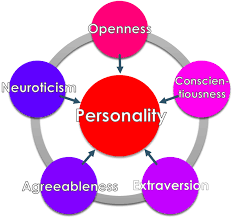Body Language Examples

Communication is not just about what we say; it’s also about what we don’t say. Our bodies are constantly sending signals, whether we’re aware of it or not. These nonverbal cues, known as body language, play a significant role in how we perceive and interact with others. Understanding body language can give us valuable insights into people’s thoughts, feelings, and intentions. In this article, we’ll explore various body language examples and their meanings.
1. Facial Expressions:
Facial expressions are perhaps the most obvious form of nonverbal communication. A smile can indicate happiness, while a furrowed brow might signal confusion or concern. Raised eyebrows can denote surprise, while narrowed eyes may convey suspicion. Paying attention to these subtle changes in facial expression can help us gauge someone’s emotional state and respond accordingly.
2. Eye Contact:
Eye contact is a powerful tool in communication. It can convey confidence, interest, and trustworthiness. Maintaining good eye contact shows that you’re engaged and attentive. Conversely, avoiding eye contact can suggest discomfort, dishonesty, or disinterest. However, cultural differences may influence the meaning of eye contact, so it’s essential to consider context when interpreting this body language cue.
3. Posture:
Our posture speaks volumes about our confidence and attitude. Standing tall with shoulders back signifies strength and assertiveness, while slumped shoulders may indicate insecurity or low self-esteem. Leaning forward demonstrates interest and engagement, while leaning away can suggest boredom or discomfort. Paying attention to posture can help us understand how others feel and how they perceive themselves in a given situation.
4. Gestures:
Gestures can enhance verbal communication and convey meaning in their own right. For example, waving goodbye, nodding in agreement, or shaking hands all have specific interpretations. However, gestures can also vary widely across cultures, so it’s essential to be mindful of potential misunderstandings. For instance, the “thumbs up” gesture may signal approval in some cultures but be considered offensive in others.
5. Touch:
Touch is a powerful form of nonverbal communication that can express a wide range of emotions, from affection to aggression. A pat on the back can convey support or encouragement, while a firm handshake denotes confidence and professionalism. However, it’s crucial to respect personal boundaries and cultural norms when using touch as a form of communication, as it can easily be misinterpreted or cause discomfort.
6. Proximity:
The distance between individuals can also communicate important messages. Standing too close may be perceived as intrusive or aggressive, while maintaining a comfortable distance demonstrates respect for personal space. Adjusting proximity based on cultural norms and individual preferences is key to effective communication and building rapport with others.
7. Mirroring:
Mirroring is a subconscious behavior where individuals mimic each other’s gestures, expressions, or speech patterns. It’s often a sign of rapport and empathy, indicating that individuals are on the same wavelength. Mirroring can help foster connections and build trust in interpersonal relationships by signaling similarity and understanding.
8. Microexpressions:
Microexpressions are fleeting facial expressions that occur involuntarily and reveal genuine emotions. They often occur in response to stimuli before individuals have a chance to mask their true feelings. Although they last for just a fraction of a second, microexpressions can provide valuable insights into someone’s emotional state, helping us understand their true intentions and feelings.
9. Tone of Voice:
While not strictly a form of body language, tone of voice plays a crucial role in communication. The way we speak—whether it’s the pitch, volume, or intonation—can convey emotions and attitudes. A cheerful tone can indicate enthusiasm, while a monotone voice may suggest boredom or disinterest. Paying attention to tone can help us discern underlying emotions and intentions in conversations.
10. Fidgeting:
Fidgeting, such as tapping fingers or bouncing legs, can signal nervousness, impatience, or boredom. While occasional fidgeting is normal, excessive or repetitive movements may indicate discomfort or anxiety. Understanding the context and frequency of fidgeting behaviors can help us interpret their meaning accurately.
Conclusion
Body language is a rich and complex form of communication that complements verbal interactions. By paying attention to facial expressions, eye contact, posture, gestures, touch, proximity, mirroring, microexpressions, tone of voice, and fidgeting, we can gain valuable insights into people’s thoughts, feelings, and intentions. Developing awareness of body language cues and their meanings can enhance our interpersonal skills and improve our ability to connect with others on a deeper level






